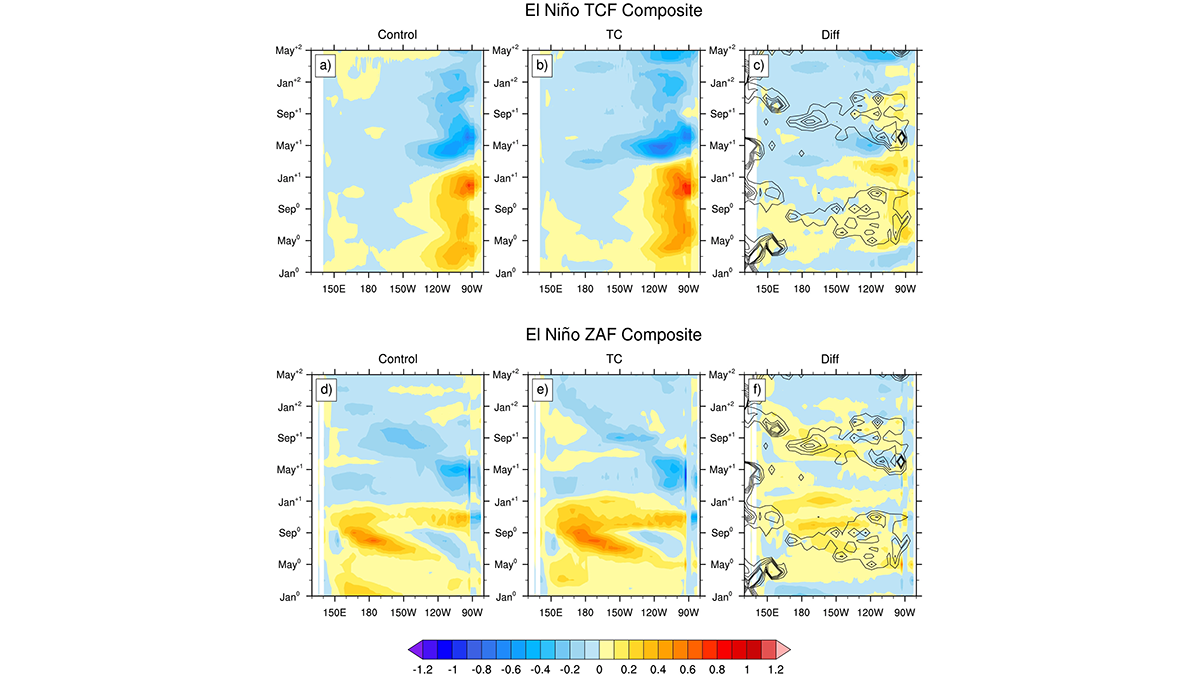Editors’ Highlights are summaries of recent papers by AGU’s journal editors.
Source: Geophysical Research Letters
In a new study, Li et al. [2023] examine the hypothesis that tropical cyclones can influence the characteristics of El Niño–Southern Oscillations (ENSO) using a suite of simulations of the CESM1.3 Earth System model with different resolutions. The tropical cyclone surface winds are extracted from a high-resolution model simulation and used to force a low-resolution simulation. Additionally, a control low-resolution simulation (not forced with tropical cyclone surface winds) and an additional high-resolution eddy-resolving ocean simulation are considered.
The results show that in this model, tropical cyclones can modulate the frequency, magnitude, and timing of the El Niño events, such that these characteristics become closer to observed ones. In particular, tropical cyclones lead to more frequent El Niño events in this model and the magnitude of El Niño events is only affected in the case of strong events. These results suggest that tropical cyclones are essential ingredients of ENSO dynamics.
Citation: Li, H., Hu, A., & Meehl, G. A. (2023). Role of tropical cyclones in determining ENSO characteristics. Geophysical Research Letters, 50, e2022GL101814. https://doi.org/10.1029/2022GL101814
—Suzana Camargo, Editor, Geophysical Research Letters

